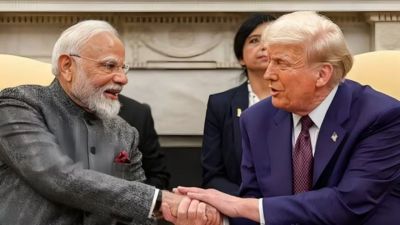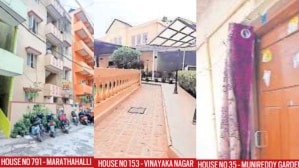‘Aggressive plantation, vertical gardens, BMC doing all it can’
Jeetendra V Pardeshi, Superintendent of the Gardens and Tree Office at BMC, talks about various initiatives taken to increase tree plantation and the city's green cover.
 Jeetendra V Pardeshi, Superintendent of the Gardens and Tree Office at BMC
Jeetendra V Pardeshi, Superintendent of the Gardens and Tree Office at BMCJeetendra V Pardeshi, Superintendent of the Gardens and Tree Office at BMC, speaks to Sweety Adimulam on the various initiatives taken to increase tree plantation and augment the city’s green cover.
What action has the Garden Dept taken to bolster Mumbai’s green cover?
BMC has undertaken various measures and one notable initiative involves introduction of vertical gardens. With Mumbai’s limited open spaces—about 1,100 recreational grounds, playgrounds and gardens—the idea of vertical gardens became appealing due to the city’s predominantly vertical development. We utilised every available space, whether horizontal or vertical, to create green areas. The areas under flyovers and bridges, formerly used as parking lots, have been converted into green urban spaces, offering citizens recreational spots with walking and jogging tracks. This aims at providing more open spaces to the public.
How is the Miyawaki garden project progressing?
In the Miyawaki forest initiative, we set a target of planting 2 lakh trees this year upon the CM’s office directive. Despite starting during the pandemic, till last year we have already planted about 4 lakh trees. This year, one plantation round has been completed, leaving 1 lakh trees to be planted by March to meet the set goal. Miyawaki, a Japanese technique introduced by botanist Akira Miyawaki, was adopted for its resilience against floods and its ability to expedite forest growth even in limited spaces. It emphasises using local trees rather than exotic ones, making it an ideal method for creating green spaces in Mumbai. Currently, trees have been planted on 64 plots. Another 14 plots, all owned by BMC, have been designated for planting the remaining 1 lakh trees. BMC and developers have worked in collaboration on a few plots, but most of the areas marked for Miyawaki forests belong to BMC.
What about existing gardens, considering complaints about their upkeep?
Contrary to perception, maintaining existing gardens remains a priority. Among the 1,100 plots, 650 are dedicated to gardens and recreational grounds, while remaining are playgrounds, all accessible to citizens. BMC consistently collaborates with officials to enhance these spaces. Since the BMC-run facilities are freely accessible to the public, these gardens attract a substantial daily footfall of nearly 15 lakh Mumbai residents. Given this substantial usage, the BMC is committed to ensuring proper maintenance of these spaces and can’t afford to overlook their upkeep.
How many trees does BMC plant annually? Any change in recent years?
Historically, BMC used to plant around 25,000 trees per year. However, with implementation of the Miyawaki forest initiative, the number has significantly increased to over 1 lakh trees annually.
Any special steps the garden department is taking amid poor AQI?
Our primary focus is on aggressive plantation. Additionally, we’ve been actively raising awareness among citizens about micro greening through a first-of-its-kind handbook (online only). This manual aims at equipping people with scientific greening practices, fostering a culture of purposeful planting that contributes to biodiversity. Launched in March last year, this manual incorporates suggestions from 75 scientists nationwide. It offers detailed guidance, including which plants thrive in specific spaces like balconies and precise watering instructions, empowering individuals to contribute meaningfully to greenery.
How many trees does Mumbai have currently?
As per the previous survey, Mumbai had 30 lakh trees, and with the Miyawaki plantation initiative, an additional 5 lakh trees have been planted, bringing the total count to 35 lakh trees. Another 1 lakh trees are expected to be added by March.
Is the tree count sufficient?
No. As compared to Mumbai’s population, the number of trees is significantly low. We’re now concentrating on maximising the green cover through various initiatives and by utilising all available spaces. Urbanisation and concretisation have created urban heat islands in the city, causing extreme localised heat. Given the limited space for traditional parks and green areas, we’re exploring alternative methods to enhance greenery. The goal is to boost the city’s vegetation cover by 30 to 40 per cent by 2030.







